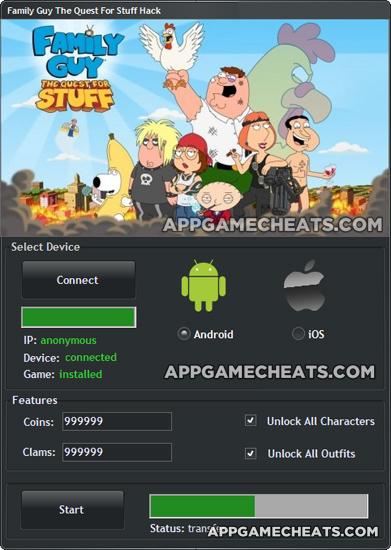

V. MUSIC PRODUCTION
A. THE UNDERSCORE ? INTERACTIVE VS. FILM MUSIC
Until recently, you simply could not compare game music to film music. Every aspect involved in their production, from budgets to performance, made it an impractical comparison. Today, these two media have a working relationship. Games are created to support movies and movies are made from successful game franchises. Film composers are now writing for games, and some game composers have made the transition to film. Hollywood orchestras and orchestrators are now commonly used for game music scores. Why make this comparison? Because even though the considerations involved in their creation are different, their effect and function are relatively the same.
B. STORY-DRIVEN/ROLEPLAYING GAMES
As the name suggests, the scores to story-driven games must primarily tell a story. To tell a story musically is a sublime art. A composer must be well versed in the work of his predecessors in order to understand what constitutes successful story telling using the language of music. Fortunately, centuries of music have been written for this purpose, allowing today's composer a foundation for developing this art. We now associate certain sonorities and rhythms with specific actions, emotions or locations. Compositions like Rossini's ?William Tell?, Wagner's ?Tristan? and Holst's ?Planets? have laid the groundwork for these non-verbal associations. Film and television composers have since expanded on these motifs to help express the elements within a story.
A portion of story telling is to define the environment, both time and place. Musically, we draw influence from folk traditions for such a purpose. Through ethnomusicology we can effectively represent locations and time periods by incorporating traditional instruments, modes and progressions into the score. For instance, a tabla, tambour or sitar is appropriate for describing an Indian location. If such instruments are not available, the music may be orchestrated in such a way as to mimic these traditional sounds. A modern orchestra is greatly enhanced by the addition of folk elements for the purpose of describing a specific time and place.
Characters within a story are supported through the development of melodic themes and motifs associated with each character. Orchestrating the motifs throughout various instruments will provide a sense of character development as the game progresses. In addition, varying the harmonic support of these themes will reflect the character's physical, mental and emotional states.
Game music for the story and role genre must highlight the dramatic events in the story as well as drive the game-play. NIS and FMVs are the primary tools for advancing the storyline and scoring to these videos is generally a straightforward process. You must consider, however, that game-play is also a dramatic event that contributes to the overall development of the story. Herein lies the careful balancing act of supporting the story as well as the action, without the music sounding repetitious. Cross fading alternate versions and transitions, or layering individual tracks that are programmatically muted and un-muted, will secure the musical effectiveness over long periods. The programming methods of manipulating music within a game are beyond the intent of this article. Further reading from game development resources such as ?gamasutra.com? will provide a closer look at some of the programming methods used in game music playback.
B. ACTION/ARCADE AND SPORTS GAMES
The most basic function of game music is best exhibited in ?arcade? style games in which the overall gaming experience is enhanced by the addition of adrenaline-surging music. The music helps to drive the action, thereby heightening the intensity of the experience. For this reason, it's very common for these games to license tracks from well-known, marketable artists with a track record of producing music that translates to the listener. The interactive potential of this music, has thus far been very low. However, as many artists are also avid gamers, they are beginning to show interest in lending their talent toward interactive soundtrack design, if not producing tracks in their entirety. Generally speaking, the interactivity of the music in arcade-style games rarely moves beyond loops and stings. In many cases, this is all that is required. However, as the complexity of arcade-style games grow, so must the level of musical interactivity. The music for these games should support any changes in game-play. Power-ups, signature moves and multiple damage are all examples commonly reserved for the sound design to immerse the player in the action, but are appropriately expressed through music as well. A deep understanding of the game-play will reveal to the composer, new areas to interactively enhance an otherwise monotonous arcade soundtrack.
VI. FULL MOTION VIDEO (FMV)
Since the FMV is a controlled environment, it is tempting for the sound designer to elaborate on the sound effects. While in some cases, it may be appropriate to heighten the dramatic impact of the story; great care should be maintained to be consistent with the in-game sound design. An incredible- sounding FMV is surely a joy to behold, however, if the in-game sounds do not hold up to the FMVs, the playing experience will be diminished. The purpose of the FMV is to dramatically move the storyline, and to provide a break in the action. Since Most FMVs occur after completing a level, there is an inherent sense of reward when viewing the FMV. The sound design should pay respect to this as long as it doesn't stray too far from the in-game sound. The FMV should act as a seamless transition into and out of the game play. In my opinion, it is best to use in-game sounds within the FMV wherever in-game movements or actions are present.
The second consideration for FMV sound is the mix of all the sound elements. All dialog, sound effects and music should be mixed at comparable levels to the in-game mix, unless there is a dramatic motivation for stressing one over the other.
VII. SOUND REVIEWS
The Beta date is just around the corner. Your sound team has worked countless hours, and is nearing the finish line. You might think it's time to examine the sound for any necessary revisions. Well by this time it's probably too late. As mentioned earlier, the sound team is generally the last in line to begin creating their content. Add to this, the fact that all previously missed deadlines becomes their burden to make-up. Your sound team will likely be delivering content right up to the last minute. You will need to have in place a regular and effective reviewing mechanism to stay on top of the direction of the game sound.
Using the same group of reviewers used for the demo phase (part 1 of article), create a questionnaire that rates the general aspects of the sound. Rating each individual sound would be time-consuming, so use categories of sounds and include room for comments or explanations. By assembling the various questionnaires, you will be able to develop a consensus opinion that will reveal spots that need further attention. If this is performed in a timely and periodic fashion, your sound team will be best able to manage the revisions, as they are needed.
VIII. GOT YOUR SOUND BUDGET? ?USE IT!
A. YOUR SIMPLE CHECKLIST Today's games are competing with each other on every level. Sound is no exception. You must secure the best resources possible for your sound team. This will require that you use your budget wisely, and use all of it.
Prior to beginning the sound effects production, ask yourself the following questions.
1. Is your sound team complete? (i.e. sound designer(s), supervising/Lead sound designer, composer, audio director and audio programmer)
2. Is each member of the sound team assigned a specific task uncompromised by additional or overlapping roles?
3. Is your sound team assigned only to your project?
4. Does your sound team have enough time to complete your project?
5. Does your sound team have the adequate resources necessary for your specific game? These include sonically treated work spaces, equipment, software and sound effects libraries that are compatible with the needs of your game.
6. Does your sound team have a demonstrated track record of producing sound within the style and genre of your project?
If you answered ?yes? to all of these questions, your sound design team is properly equipped, prepared and ready for production. Answering ?no? to any of these questions will tell you where you will need to focus portions of your budget.
B. OUTSOURCING
If the sound team is incomplete or in any way compromised, you should consider outsourcing an appropriate amount of the workload to game audio specialists. Look for companies and people that have a strong resume of interactive sound production, and have successfully produced sound for ?high profile? titles. If your game has special stylistic needs, then consider companies that have a track record of producing sound for similar titles.
C. FOLEY
The overall 'theme? of your game will help dictate where you may need additional resources. A historically based game will require authenticity; therefore consider obtaining fresh recordings of historically accurate weapons and vehicles. If your game focuses on destruction, a sizeable Foley session may be appropriate to produce original content unencumbered by overused sound effects libraries. A small but well organized recording session can give your game a lot of fresh spark without breaking the budget.
IX. MARKETING YOUR SOUND
Game marketing has typically focused on the creator, developer or the voice actors within the game. In many cases, sound can be used as a marketing tool as well. For ?The Incredible Hulk ? Ultimate destruction? we hired some of Hollywood's finest sound recordists to coordinate a Foley session that would produce the raw destruction sounds we needed to create the sound effects necessary for this game. Our session took place at an auto-dismantling yard in a southern California desert. A giant forklift and bulldozer were used to drop, drag and tear apart cars, vans and trailers. Multiple video cameras captured the session for future use on the ?Behind-the-scenes? reel. The added benefit was the marketability achieved by everyone's dedication to producing the most destructive sounding game to date. Your ability to market your game's sound will also help raise any additional finances needed to bring your sound up to the next level.




 Word Pop Answers Level 2 for iPhone and Android
Word Pop Answers Level 2 for iPhone and Android What Food Answers All Levels
What Food Answers All Levels Photo Spot Mania Answers All Levels
Photo Spot Mania Answers All Levels Hi Guess 100 Brand 2 Answers Levels 1-100
Hi Guess 100 Brand 2 Answers Levels 1-100 Granny Smith Free Hack for Coins & All Levels - AppGameCheats.com
Granny Smith Free Hack for Coins & All Levels - AppGameCheats.com